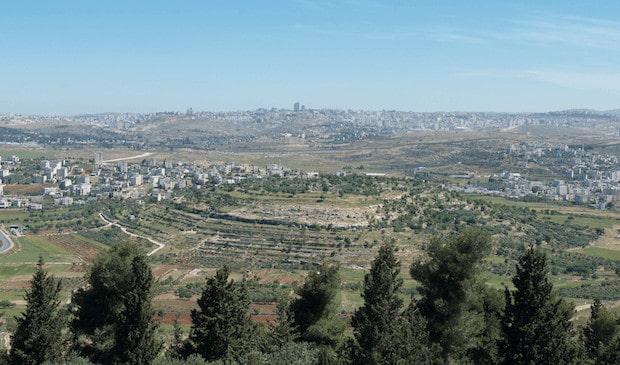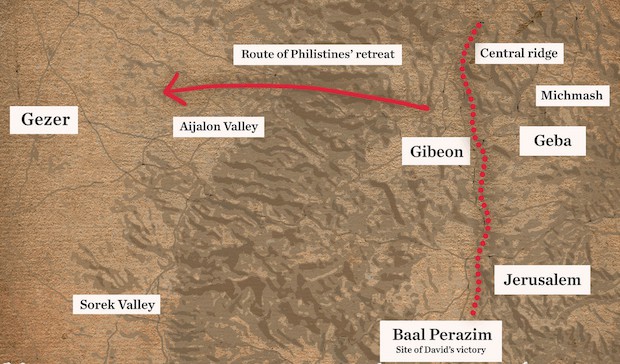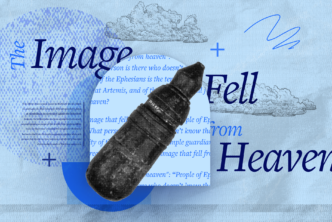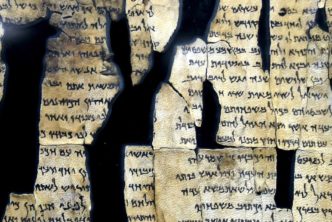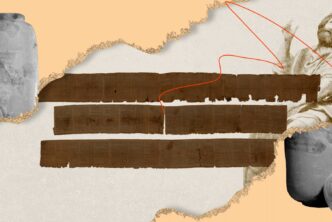3 Cities, 2 Battles, 1 Rallying Cry. Biblical archaeology and geography have much to teach us.
David fought many battles, but there is one that stands out in the memory of the Israelites. After David was anointed king and he conquered Jerusalem and made it his capital, the Philistines came to the outskirts of the city and attacked twice. Both times God delivered David.
Fighting the Philistines
The Philistines knew that a united North and South would be a formidable foe. Once David established his capital at Jerusalem, the Philistines marched up the Sorek Valley to the Valley of Rephaim. This became a staging ground south of Jerusalem (the location of modern Jerusalem’s southern suburbs). David inquired of the Lord and was told to “go up,” for God would give the Philistines into his hand (2 Sam 5:19).
The first battle was a defeat for the Philistines, who fled so quickly they abandoned their idols on the battlefield (5:21). They returned for a second battle. David again inquired of the Lord and was told to circle around them and attack through a grove of trees (5:23). David defeated the Philistines again and blocked their retreat eastward into the Sorek Valley. The Philistines had to retreat north and take the Beth Horon route down to the Aijalon Valley, where the fortified Canaanite city of Gezer was located.
At the juncture of this route in the hills stood several cities, including Gibeon, Geba, and Michmash. The Philistines had previously fought a battle in this area with David’s predecessor, Saul, whose army struck them down “from Michmash to Aijalon” (1 Sam 14:31). Later, David chased the Philistines even farther—out of the hills down to the coast, from Geba to Gezer (2 Sam 5:25). Once the Philistines reached the Canaanites’ fortified city, David ended the pursuit.
From Geba to Gezer
After these battles, the Israelites took up a rallying cry—a statement conveying the magnitude of the victory over the Philistines—“from Geba to Gezer!” This rallying cry summarizes David’s obedience to carry out the task of God. The biblical authors assume their audience will understand what this phrase means. Nearly 200 years after the actual event, Isaiah the prophet cited it to encourage the people of Judah (Isa 28:21).
Unfortunately, the impact of this rallying cry is lost to us today. It doesn’t appear on plaques or t-shirts in Christian bookstores; it’s never included in 30-day prayer calendars. We simply aren’t familiar with the history and geography behind the battle, so we miss the importance of the phrase “from Geba to Gezer.”
Of course, there’s a catch to all this: The city of “Geba” is replaced with “Gibeon” in several texts (such as Isa 28:21; 1 Chr 14:16). The Septuagint (the Greek translation of the Old Testament) also uses Gibeon instead of Gezer in all these passages, even the original account in 2 Samuel.
Is there a mistake? Were the biblical authors confused about the cities? Naturally, critical scholars use this text to claim that the Bible has errors and contradictions. There is a logical explanation, but first, we need a short lesson on the archaeology of the region.
Geography and archaeology
Geba is located at modern-day Jaba’, about 5.5 miles north of Jerusalem. The modern Arab village preserves the biblical name, and the site has not been excavated. Geba was a city given to the priestly tribe of the Levites (Josh 18:24; 21:17). It was the location of a major battle involving Saul’s son Jonathan, when the Philistines were dug in at the stronghold (1 Sam 14). After Israel and Judah became separate kingdoms (the divided monarchy), King Asa fortified this site (1 Kgs 15:22; 2 Chr 16:6). During King Josiah’s reforms, sites for idol worship were destroyed as far north as Geba (2 Kgs 23:8). Essentially, Geba was the northern border city of Judah.
Gibeon is identified with the modern Arab village of El-Jib. The site was investigated in the nineteenth century and excavated between 1956 and 1962. The excavations revealed a city wall with two water systems, a large pool with a spiral staircase (probably the pool of Gibeon in 2 Sam 2:13 and Jer 41:12), and, later, an underground system with a stepped tunnel. Evidence of a wine production center dated to the eighth and seventh centuries BC also has been found. The site’s identification with biblical Gibeon was confirmed when excavators found 31 jar handles stamped with the name gb‘n.
Gibeon (modern El-Jib) as seen from Nabi Samwil. Source: commons.wikimedia.org
Gezer, located in the Aijalon Valley, has been excavated extensively—first between 1902 and 1909, then during the 1960s and 70s, and recently by the Tandy Institute for Archaeology (which I direct) at Southwestern Baptist Theological Seminary. Our recent work at Tel Gezer has shown a series of Canaanite cities from the Middle Bronze Age (2100–1500 BC) to the 10th century BC. A massive destruction where we found three bodies was excavated last year and is attributed to the campaign of Merneptah, who ruled Egypt during the thirteenth century BC and erected a victory stele (monument) that mentions the name of Israel.
A subsequent city at Geba was rebuilt with some Philistine pottery, suggesting a relationship between this Canaanite city and the Philistine Pentapolis. Although this later city at Geba was fortified with an outer defensive wall, it was destroyed in the mid-tenth century BC, and a new city was built, evidence of Solomon’s building activity (1 Kgs 9:15).
Baal Perazim is the new name David gives the site of his victory (2 Sam 5:20). It has been associated with Giloh, a site above the Rephaim Valley where archaeologists have found a settlement with a series of towers dating from the Iron Age I and II periods (1177–5887 BC). This location matches the biblical description of the Philistines spreading out in the valley of Rephaim (5:18) while David went to the stronghold to meet them (5:17).
Geba or Gibeon?
A central ridge divides Geba and Gibeon, with Geba on the east side of the ridge and Gibeon on the west. The cities are about two miles apart. David’s battle with the Philistines likely happened during the tenth century BC. By the time of Isaiah in the eighth century, Gibeon had become a major city in the region. Therefore, when Isaiah invokes God’s faithfulness in David’s victory, he swaps out “Geba” for “Gibeon”—a place his audience would have known well (Isa 28:21). The author of 1–2 Chronicles—who likely wrote much later in the fifth or fourth century BC—does the same thing, changing the rallying cry to “from Gibeon to Gezer” (1 Chr 14:16).
I often do something similar when I talk about where I live in Texas. My home is located in the area between Dallas and Fort Worth, but when I tell people where I live, I freely interchange these two major cities.
How do we fight battles?
Recent archaeological discoveries and knowledge of geography and history don’t just help us understand the original setting of biblical events. This kind of scholarship also allows for a more intimate knowledge of Scripture and its message. The events of 2 Samuel 5 unfold during a remarkable period in David’s kingship—so remarkable that it was still fresh in the mind of Isaiah 200 years later. This story recounts how God was faithful. It also recounts how David was faithful in his obedience to God.
There were two battles—same enemy, same location, same situation, same outcome—yet David executed two different battle plans. This detail may hold insight for us. When we overcome sin in our life, we win a great battle over our enemies, and we want to memorialize the battle plan. We are quick to formulate the steps we took to overcome fear, be a better parent, correct a sinful habit, and so on. Some of us write blog posts or even books about our successful battle plans.
God does not want us to pat ourselves on the back. He wants us to get ready for the next battle! It is possible that a new struggle will require a different plan; sometimes God uses different methods for the same circumstances. David does not assume that he should use the same battle plan. He was consistent in seeking the Lord, obeying the Lord, and persevering—he kept fighting!
Although God’s methods may vary, his principles remain consistent. Our victory lies not in the precise battle plan, but in following our King. The Israelites learned that as long as they sought God first, their new nation would be victorious.
Steven M. Ortiz is a professor and director of the Tandy Institute for Archaeology at Southwestern Baptist Theological Seminary (TandyInstitute.org). He directs the excavations at Tel Gezer. Ortiz’s research and publications focus on the archaeology of David and Solomon and the border relations between Judah and Philistia.
***
To learn more about the biblical archaeology and geography of Israel, we recommend Lexham Geographic Commentaries (5 vols.) and Archaeology in Action: Biblical Archaeology in the Field (3 hour course).
This article originally appeared in the March/April 2019 edition of Bible Study Magazine.

